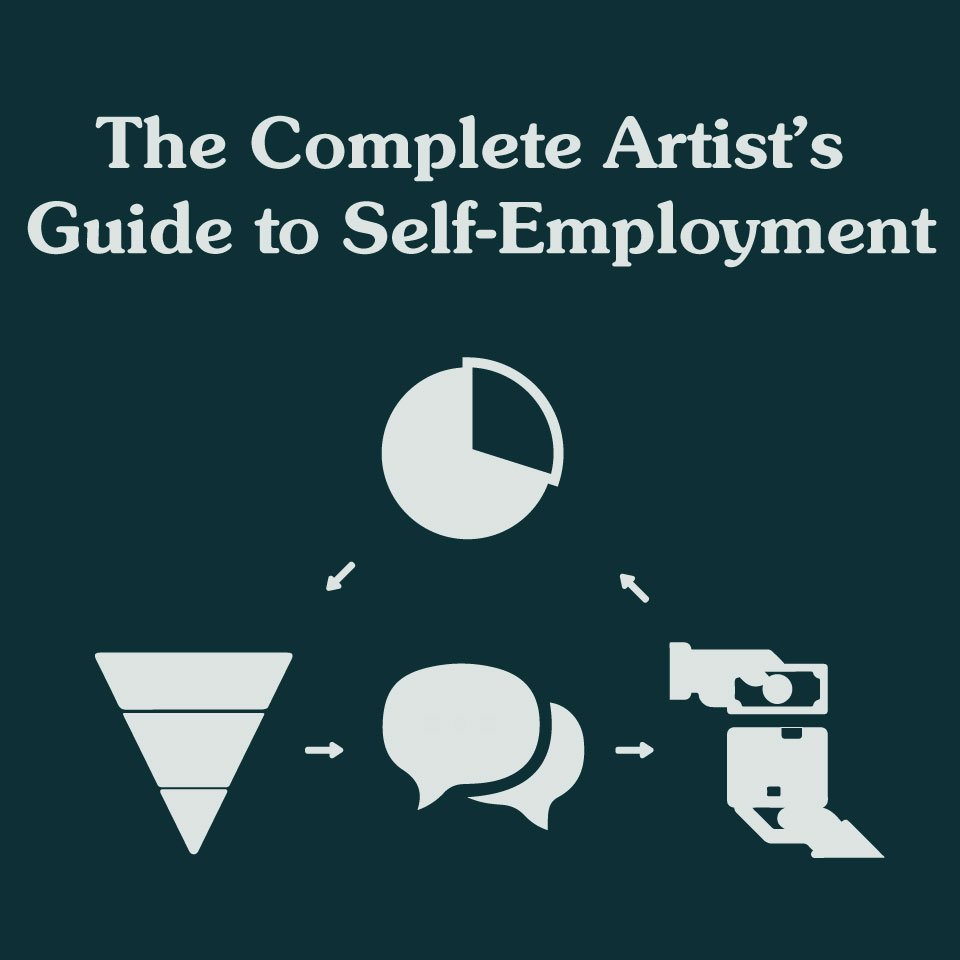

For the artist determined to go their own way, making a living doing what you love requires mastering more than just your craft, it requires embracing entrepreneurship.
This Attract, Chat, and Deliver Framework will help you do exactly that.

The Attract phase is all about generating leads. A lead, in its simplest form, is a person who:

You can kickstart this process right now by creating two simple but powerful lists.
This list is for anyone who would reasonably trust you to do what you said you would do. Don't overthink this. Start with family and friends, and then expand to:
The goal is to write down 20 to 25 people. This list is the foundation of your trusted network.
Now, think deeper about the people on your first list. Which of them have a problem you can solve with your unique artistic skill? This second list will likely be much smaller, but it requires a deeper dive. For each person, ask:
The answers to these questions are crucial, but you may not know them yet. That brings us to the next step: talking to them.
The idea of reaching out can stir up a lot of anxiety, especially for artists. You may worry:
These fears are completely normal. But here is the spoiler for the next phase: in all of these conversations, honesty is paramount. The goal is not to be salesy or inauthentic, but to genuinely explore whether you can help.

The Chat phase is about moving beyond your assumptions and speaking directly to the people on your "People You Can Help" list to understand their situation better.
When you reach out to the people you trust, your objective is not to immediately sell, but to learn.
You will do two main things: find the real problem and make a good offer.
By focusing on their problems and the pain those problems cause, you transition the conversation from an awkward pitch to a genuine exploration of how your skills can create a meaningful solution. This is how you set the stage for a deal without feeling inauthentic.
A good expert never pitches their skills right away. They ask questions to find the true problem. Your job is to be truly curious about their business and their problems.
Great questions to ask:
Your intention must be to understand, not to fix. The fixing happens later, in the Deliver Phase.
People can tell when a salesperson only cares about making the sale. You must check your heart:
You don't go to a heart doctor for a scraped knee. You need to make sure their problem is appropriate for an expert like you.
Use BANT to see if it is a real job:
You also need a Minimum Level of Engagement (MLE). This is a line you draw in the sand, saying, "I will not work for less than this amount of money." This keeps you from doing small, cheap jobs and saves your time for the serious clients who are willing to pay serious money.
If the problem passes through all of these qualifiers, you can finally make an offer to help! This is the first part of the final Finish Phase.
Your offer must be about their success. It needs to cover:
This is where you set up the payment terms.

Once you've chatted and closed a deal, the Deliver phase is where you execute the work and solidify your reputation.
The success of this phase hinges on achieving the results you and the client discussed. While the how of the artistic process is unique to you, these principles ensure a smooth delivery:
Make sure the client knows exactly what happens next the moment you start working together. This could be a standardized email, a brief kick-off call, or access to a client portal. Eliminate any uncertainty.
The work you do should leverage your unique expertise, the je ne sais quoi that makes working with you different and offers unique outcomes. If the results you offer are not unique, they become a commodity and are not worth much. Focus on delivering outcomes that result from your special process.
To avoid endless back and forth revisions, formalize your feedback process. Clearly state in your agreement:
Never start work without a payment plan. A common structure is:
The entire Attract, Chat, and Deliver framework is not just a cycle for getting paid, it is an engine for building trust.

In the market, trust is built on:
People do not hire or give money to people they do not trust.
Every time you successfully execute this cycle, attracting a client, closing the deal, delivering remarkable results, and getting paid, you build more trust.
This creates an upward spiral where you continuously attract higher and higher quality clients, delivering cooler and cooler results for the rest of your creative career.
Simple? Yes.
Easy to execute? Definitely not.
But consistency in these simple steps is the key to lasting self-employment.
Get personalized mentorship to sharpen your skills and land better opportunities.

Join our mentorship sessions for your ongoing Renderman Art challenge entry.

Join our mentorship sessions for your ongoing Renderman Art challenge entry.